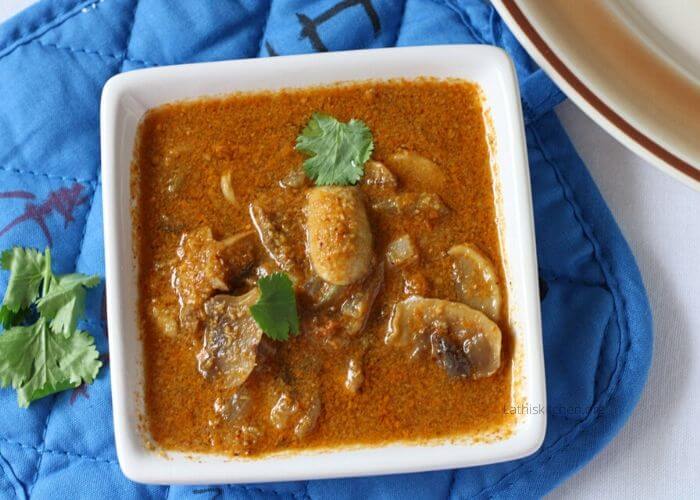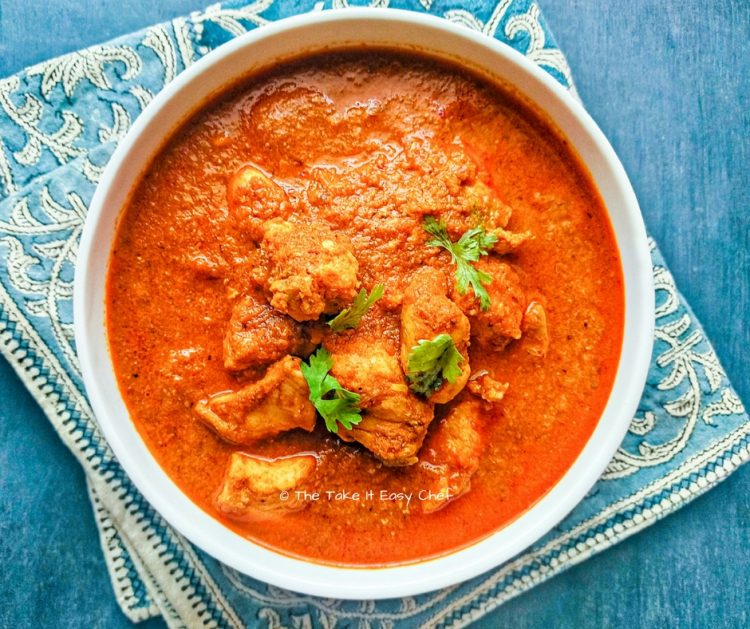
Goa, the pearl of the Konkan coast, is not just a land of pristine beaches and vibrant festivals but also a treasure trove of culinary heritage. Among its many celebrated dishes, Xacuti (pronounced “sha-koo-ti”) stands out as a testament to the region’s unique blend of Indian and Portuguese influences. What began as a humble dish in the village kitchens of Goa has now found its way onto global plates, captivating food lovers worldwide.
The Origins of Xacuti
Xacuti is believed to have originated in the traditional kitchens of Goan villages, where women would grind a mixture of spices, herbs, and roasted coconut on a grinding stone. This labor-intensive process laid the foundation for the rich and aromatic dish we now know.
The name “Xacuti” is derived from the Portuguese word “chacuti,” reflecting the influence of Portuguese colonization on Goan cuisine. However, the dish itself is rooted in the Indian tradition of creating layered flavors using locally available ingredients. Xacuti’s evolution embodies the marriage of Indian spices with Portuguese culinary techniques, making it a true reflection of Goa’s multicultural history.
What Makes Xacuti Unique?
The hallmark of Xacuti is its complex spice blend and the use of roasted grated coconut. Which gives the dish a distinctive, smoky flavor. The masala paste typically includes a mix of spices such as coriander seeds, cumin, cloves, cinnamon, fennel, nutmeg, and poppy seeds. Roasted to perfection before being ground into a paste with coconut. This masala is then combined with red chilies, tamarind, and turmeric to create a base that is rich, flavorful, and aromatic.
Traditionally, Xacuti is made with chicken or mutton, though the use of beef, pork, or even vegetables is not uncommon. The protein is slow-cooked in the spiced coconut gravy until tender, allowing the flavors to meld beautifully.
From Villages to Feasts
In Goan homes, Xacuti was often prepared for special occasions, festivals, and Sunday family lunches. It is particularly popular during celebrations like Christmas, Easter, and weddings. Where it is served alongside other Goan delicacies such as sannas (steamed rice cakes) or poee (Goan bread).
Each village and household had its unique take on Xacuti, with subtle variations in the spice mix or cooking technique. By making it a deeply personal dish that carries the stamp of family tradition.
Xacuti Goes Global
The global popularity of Xacuti can be attributed to the Goan diaspora. Who carried their culinary traditions with them wherever they went. From local Goan eateries in London to fusion restaurants in New York, Xacuti has earned its place as a beloved dish on international menus.
Its appeal lies in its versatility—Xacuti can be adapted to suit various dietary preferences without losing its essence. Vegetarian versions with mushrooms or jackfruit have become popular, offering a taste of Goa to those who prefer plant-based options.
Cooking Xacuti Today
While traditional Xacuti involves hours of grinding and slow cooking, modern-day convenience has made it more accessible. Pre-packaged Xacuti spice blends and pastes are readily available, allowing food enthusiasts worldwide to recreate the dish in their own kitchens. However, for an authentic experience, nothing compares to making the spice blend from scratch and slow-cooking it to perfection.
The Legacy of Xacuti
This dish is more than just a dish; it’s a story of Goa’s history, culture, and adaptability. It represents the ingenuity of village cooks who turned simple, locally available ingredients into a masterpiece of flavor. It’s also a symbol of Goa’s openness to influences, blending Portuguese techniques with Indian spices to create something entirely unique.
Today, This special dish continues to bring people together. Whether it’s a family gathered around a table in a Goan home or diners enjoying it in a fine-dining restaurant across the globe.
So, the next time you savor a plate of Xacuti, remember you’re not just eating a dish. You’re partaking in a piece of Goa’s culinary heritage. A story that began in village kitchens and continues to captivate the world.


